Green infrastructure is an increasingly popular phrase in the ecological community, but do we really understand its importance – and are we utilizing the idea most effectively? The short answer is: Mmmmmmaybe.
When someone tells you “we need green infrastructure,” you always nod. Sagely. With a deep and expansive approval of their insight.
Because we do need green infrastructure, you’re pretty sure. Like, badly. The world is slowly dying, everyone knows that. As Trump and Thunberg thunder their passionate ideals to the world, rolling back and rolling forward climate initiatives in a teeth-baring tussle, the rest of us are kind of ... trying ... to do our part.
Where we can. When we’re able. Whenever we understand what even needs to be done, which if we’re being honest, isn’t 100 percent of the time.
We’re talking maybe 90/10 here. Okay, fine, sometimes 70/30. On a good day.
There are many steps to solving what’s wrong with the world. So many, it can get a little overwhelming. And by “a little overwhelming,” we obviously mean “so overwhelming we feel the nearly irresistible urge to dig a dirt burrow like a rabbit and just go hibernate there for the rest of what will hopefully be a short and peaceful life.”
Not to be overdramatic or anything.
Before you do that, would you like a piece of excellent news? THERE IS A FIRST STEP. YES, REALLY.
... Really. And it’s not even that hard of a first step. The ticket to solving the climate crisis, reversing the damage we’ve done to our home and living in harmony for the rest of what will hopefully be a long and prosperous life (thank you, Spock) is really quite simple:
We need to understand green infrastructure.
Now, put the words “green” and “infrastructure” together and you have a pretty good idea what the term means. In a nutshell, the concept refers to the organizational structures needed for society, but constructed in such a way as to respect the planet, its resources, and the plants and animals that live upon it.
But it is so much more than that. It’s a means to a healthier, happier, the-planet-is-likelier-to-survive end. Or at least, we’re likelier to survive. Since truthfully the planet would probably move on just fine and be a lot happier without humans. But that doesn’t work so well for us.
Our task, then, is to modify our approach to environmental management in such a way that we and the Earth will make it through the next century.
Green infrastructure can help us get there.
Today we’re going to talk about what it is, what it does and why you should care. Use the table of contents below to jump straight to the subjects that interest you, OR download the full free report instead.
- What Is Green Infrastructure?
- What Does Green Infrastructure Help Address?
- What Is Stormwater Management?
- What Are the Best Green Infrastructure Types to Manage Stormwater?
- What Are the Benefits of Green Infrastructure?
- How Does Green Infrastructure Save Money?
- How Do We Misunderstand What “Green” Is?
- Green Infrastructure and Stormwater Best Management Practices
- What Are the Best Materials to Use in Green Infrastructure Projects?
- What Steps Can You Take Toward Implementing Green Infrastructure?
--
What Is Green Infrastructure?
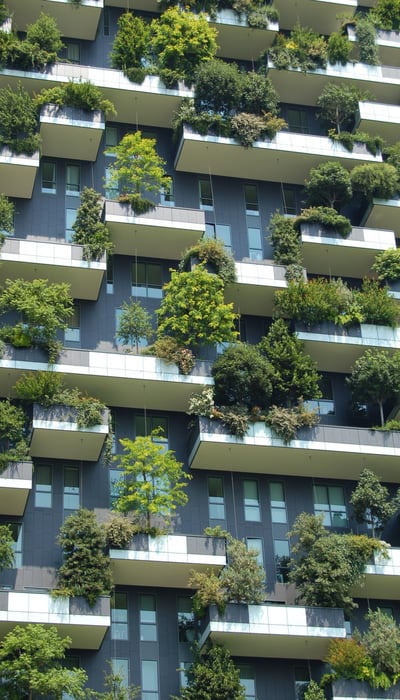 The Incredible Power of Green Infrastructure and Why It Matters | The phrase “green infrastructure” encompasses systems designed to trap and treat stormwater at its source.
The Incredible Power of Green Infrastructure and Why It Matters | The phrase “green infrastructure” encompasses systems designed to trap and treat stormwater at its source.
Green infrastructure (GI) refers to the various systems and structures society uses on a daily basis – such as buildings, utilities and technology – that are created to manage stormwater with the environment in mind.
Yet to leave it here is like accepting that the definition of “love” is a chemical process that binds one organism to another for the sake of procreation and other evolutionary benefits.
I mean … yes. It is. But as we all know, it’s so much more than that.
(Plus, pizza is not an organism, and everyone loves pizza. So clearly that definition is incomplete. Nobody makes babies with pizza. We hope.)
Point being, “green infrastructure” is more than the sum of its parts, and it’s critical we understand that whole if we want to design healthy cities, rural communities and wild areas.
A Green Infrastructure Definition
To answer the question “What is green infrastructure?” we need first and foremost a definition:
The EPA defines green infrastructure as “a cost-effective, resilient approach to managing wet weather impacts that provides many community benefits.” It also points out that, in contrast, “single-purpose grey stormwater infrastructure—conventional piped drainage and water treatment systems—is designed to move urban stormwater away from the built environment.” (1)
Green infrastructure, on the other hand, is designed to trap stormwater at its source, treat it there and release it slowly back into the environment. This not only nourishes plants within our cities, it prevents massive amounts of runoff from rooftops, parking lots, streets and more.
In other words, green infrastructure is a foundational element of sustainable design, helping both urban centers and rural environments to reduce the unnatural outpouring of diseased and polluted waters into streams, lakes and the ocean. You can think of it as a means by which urban and rural centers can reduce their footprint on the earth through mimicking its natural systems.
Greater implementation of green stormwater infrastructure will make a massive difference in the resilience and sustainability of human environments, and nature as a whole. We can do this in a number of ways, which we will discuss below. Suffice it to say, these are almost always better approaches than today’s conventional grey infrastructure systems.
Takeaway: Boo, grey infrastructure. Yay, green infrastructure! And here’s why.
What Does Green Infrastructure Help Address?

The main goal of green infrastructure is to ameliorate stormwater runoff, a disastrously prevalent problem in cities across the world – and in suburban to rural areas as well. As massive quantities of rain and snow bucket down on some urban areas, while leaving others bone-dry in years-long droughts, green infrastructure helps manage the water cycle in ways that are less impactful to both nature and human habitation.
To simplify the issue, the main problem is that impermeable surfaces and natural ones respond differently to precipitation. Cement, concrete, brick and asphalt do not absorb moisture, which instead sheets off them in search of sewers, rivers and streams, grey infrastructure such as dike and culverts, or natural areas that can soak it up (green spaces and soil).
No one needs to tell you that cities consist largely of impermeable surfaces: buildings, roads, parking lots, sidewalks. Because these cannot absorb stormwater, urban areas consistently churn out rivers of muddy, poisoned liquid that flows into the watershed.
That has a lot of consequences, none of them good. The main problems stormwater causes include:

Combined Sewer Overflows
Many cities, especially older ones, use combined sewers. That means greywater from homes and rainfall merge with the same sewers that handle human waste. The result is that when massive rainfall and snowmelt overrun the sewers and they back up, we get more than greywater and rainfall in our streets; we get fecal matter and disease as well. This is harmful to humans and detrimental to sanitation in general.
Toxins and Disease in Stormwater Runoff
Diseases from human waste, as well as from bird and animal droppings washed off rooftops and other impermeable surfaces, harm organisms of all kinds as well as people. Plus, that same stormwater picks up chemicals from factories, jet fuel, vehicle emissions, agriculture and other human-made outputs.
Erosion
Massive amounts of water crashing along streams and rivers also overwhelms the ability to plants to maintain banks, sloughing soil off into the water and carrying it downstream. There, it deposits as silt and muck, blocking and muddying other waterways. Precipitation sheeting off impermeable surfaces also damages the integrity of hills and greenspaces.
Algal Blooms
Stormwater carrying landscaping pollutants from lawns and gardens (the former of which is especially disastrous) washes into lakes and rivers, nourishing explosions of algae. These use up oxygen at crazy rates, choking out fish, plants and other wildlife. This is known as eutrophication, and is an enormous problem worldwide.
We need stormwater management. And we need it now.
What Is Stormwater Management?
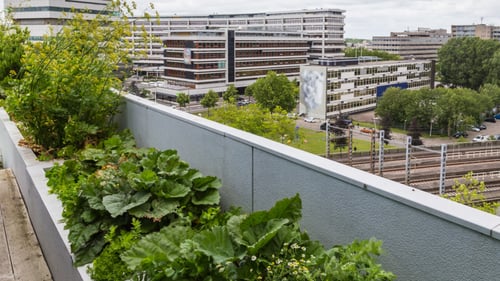 Stormwater management addresses two issues that we will face in increasing severity over the coming decades: the abundant rainfall that some areas can expect from a warming climate, paired with drought that will be the fate of others. We need only look at the story of the Gulf Coast contrasted with drought-prone California to see that climate change can have different but equally catastrophic results.
Stormwater management addresses two issues that we will face in increasing severity over the coming decades: the abundant rainfall that some areas can expect from a warming climate, paired with drought that will be the fate of others. We need only look at the story of the Gulf Coast contrasted with drought-prone California to see that climate change can have different but equally catastrophic results.
On the one hand, hurricanes, standing water, stranded pets, destroyed infrastructure.
On the other side of the water equation, we all feel really really guilty about eating almonds now, and that totally sucks. (Although there is plenty of research to show that in fact, meat and dairy are significantly more water-intensive than almonds. So, win for vegans, we guess?) (2)
Stormwater management can help address both of these issues, massive stormwater surges and drought alike.
Another Definition: Stormwater Management
And now it is time for another definition, one of our favorites: stormwater management.
In a nutshell, according to EEC Environmental, “Stormwater management is the effort to reduce runoff of rainwater or melted snow into streets, lawns and other sites and the improvement of water quality.” (3)
Nature has its own means of managing stormwater. It soaks into plants and soil, where it is cleaned and filtered, eventually making its way to aquifers. Wherever it falls on impermeable or sloped surfaces, it rushes downward towards streams, where it’s routed toward rivers, lakes and the ocean. It also ends up in valleys, on floodplains and other flat, permeable surfaces – where again, it soaks into groundwater.
It’s a perfect system. Thanks, physics! You’re awesome.
In cities, of course, this doesn’t happen. Because when physics isn’t being awesome, it’s a total jerk. Why? Because whereas only 1 percent of land is impermeable in 75 percent of the United States, as The Atlantic reports, cities are up to 40 percent impermeable. (4) Much of the stormwater that comes in has to go back out, and we just don’t have systems designed to handle it.
Grey infrastructure is only kicking the can down the road. Gutters, paved draining ditches, culverts and enormous levees (you know, like the ones Decepticons and Autobots are always fighting in) do nothing but shunt water along. Eventually, they pay the piper by dumping unimaginable quantities of tainted water into rivers, lakes and oceans.
It’s not good. And it’s not an answer.
We need to go green. That doesn’t just mean buying hybrids and washing our cars in the rain and planting drought-tolerant species, although we are huge fans of all these approaches. It also means implementing green infrastructure broadly, in cities and rural areas alike.
What Are the Best Green Infrastructure Types to Manage Stormwater?
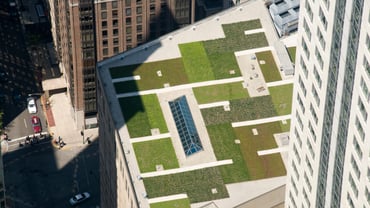 Green infrastructure, unlike grey, is geared toward managing stormwater at its source. The goal is to trap and hold onto it rather than releasing it into streets, or at least to slow down its entry. Fewer gallons surging through sewers and streams reduces erosion, sewer overflows, toxic runoff and disease.
Green infrastructure, unlike grey, is geared toward managing stormwater at its source. The goal is to trap and hold onto it rather than releasing it into streets, or at least to slow down its entry. Fewer gallons surging through sewers and streams reduces erosion, sewer overflows, toxic runoff and disease.
The good news is, there are quite a few types of green infrastructure that provide effective stormwater management.
These include:
Green Roofs and Rooftop Gardens
Green roofs and rooftop gardens are possibly the best strategy for reducing stormwater ... or perhaps we’re just biased. Whatever our personal preferences might be, they have unquestionable benefits to the urban environment and the watershed as a whole, as well as the organisms that call this world home.
Extensive Green RoofS
Remember last week, when you were admiring the roof of that train station, all covered with cute little sedum babies? How about that little straw-bale hut on campus, topped with fall-colored succulents? Or the giant green roof you can see from your 30th story office, expansive and flat and verdant?
Those are almost certainly extensive green roofs. These increasingly popular and incredibly stormwater-efficient systems might look like The World’s Most Boring Garden, but that’s because a) they’re not there to enchant the eye so much as they are to provide environmental benefits, and b) you’re not looking close enough.
Seriously, some of those green roofs have dozens of species playing happily together. If you got down on your knees for a bug’s eye view (it’s a thing), you would see all sorts of pinks and reds and greens and browns, all growing in a tangled mini-forest of water-sucking beneficence.
That’s not to say that extensive green roofs are necessarily confined to sedums as plant material.
 They’re not. Other plants – such as alternative succulents, grasses, sedges, and creeping herb varieties like thyme and oregano – also work well.
They’re not. Other plants – such as alternative succulents, grasses, sedges, and creeping herb varieties like thyme and oregano – also work well.
Whatever species you elect to plant, they all provide the same basic benefit: stormwater retention and detention. Retention means hanging on to water permanently, so that it doesn’t leave the roof. Detention is when rooftop media and plants slow down the exit of stormwater from the roof. (Think “detain,” like when that annoying guy at the coffee shop starts telling you all about his lifetime career at GE when you haven’t asked for this information and really have to go.)
Retention is ideal, of course, because it keeps stormwater from ever leaving the site where it landed. Detention also has its benefits (in the case of green roofs, anyway), because it slows runoff, keeping it out of the sewers at peak runoff times. The less water we have all flowing toward the sewers at once, the less toxins and disease we have to deal with.
I think we can all agree that less poo = better world, right? Right. That at least shouldn’t be news, people.
Extensive green roofs are less than 6 inches thick, but despite that very shallow profile, they have several impressive means of sucking up stormwater. Their main tools include:
- Plants: Plants drink in water through their roots, then breath it back out through their stomata (pores on their leaves and stems) in the form of oxygen. Yay, oxygen! This process is called evapotranspiration. Congrats – you’ve learned your vocabulary word for the day.
- Green roof media: Although extensive green roofs usually avoid true soil, because it tends to be heavy and compact easily, they always employ some sort of media in which the plants grow. Those media have varying levels of water-holding capacity, both to soak up water for plants to drink later, and to manage rain or snow as it comes out of the sky.
- Moisture retention mat: Many green roofs include a moisture retention layer or mat to help soak up extra stormwater. Plants can drink this water later when conditions are dry. This is optional, but becoming more popular.
There are several equally important components, including the root barrier (so plants don’t grow into buildings), waterproofing membrane (so moisture doesn’t leak into and damage the building envelope), and a filter cloth to catch media and debris and keep it out of the drainage layer and other components below it. Depending on the green roof, there might be other components as well, such as thermal insulation. These are typically layered like so, with the plants on top:
- Vegetation
- Growing Media
- Filter Cloth
- Drainage Layer
- Root Barrier
- Waterproofing Membrane
- Optional insulation layer
Working in concert, these components help to ensure that stormwater coming down from the sky stays on the roof for as long as possible, and hopefully forever.
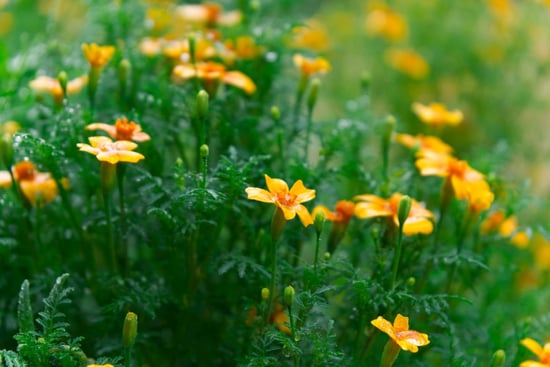 Intensive Green Roofs
Intensive Green Roofs
An intensive green roof has most of the same base layers. It differs at the very top, where the growing media is typically quite a lot deeper, from 6 to 24 inches – and sometimes more. Typically, though, a max of 2 feet is enough to grow an amazing variety of plants, shrubs and even trees.
Rooftop Gardens
This is really just another term for intensive green roofs. Because of the greater depth of soil or growing media, the green roof looks much closer to what we would term a “garden,” with larger species, dramatic plant clusters, pathways, features such as benches or fountains, and so on.
In the case of intensive green roofs/rooftop gardens, the engineering specifications can get more burdensome. They’re not necessarily trickier to design, but they do require careful attention to the water-holding capacity and drainage of the roof. According to Green Roof Plan, these roofs can weigh as much as 150 pounds per square foot when they’re planted and saturated with liquid. (5) That’s, well, intense.
Yeah, we went there. It’s a thing we do.
Floating Wetlands
We wish we could have been a fly on the wall for the moment when some genius thought, Instead of bringing water to wetlands, why not bring the wetlands to our water?
If “floating wetland” is a confusing term, we don’t blame you. Usually the water is in the wetlands (hence the name), not underneath them. Yet as novel as they may be, floating wetlands are an increasingly popular green infrastructure tool for mitigating the damage caused by stormwater runoff.
This is vastly oversimplifying the case, but think of them like floating yoga mats with little gardens on top. All you have to do is plant water-tolerant species in a buoyant medium and set it adrift on a lake, pond, river or other body of water and boom: you’ve got a little bioscrubber. And you don’t even have to be anywhere near a “real” wetland.
How does it work? You can think of these as tiny ecosystems that take up chemical inputs and nutrients, break them down and lower the number of harmful compounds in our waterways. By “planting” water plants on a floating medium, you enable them to travel around a pond or lake, soaking up nutrients and converting them to oxygen. It’s brilliant. Now instead of being left in the water to encourage algal blooms, inputs such as nitrogen or phosphorous get sucked up by hungry plants who deliver measurable climate benefits to the atmosphere. Plus, plants grab onto disease and toxins and filter them out.
Moreover, because we can manage these little floating islands so easily, we can trim off dead plant matter – avoiding the creation of more biomass in the waterway – and keep the plants younger. Since younger plants feed more prolifically, therefore sucking up more nutrients, that’s a major benefit.
Cutting-edge companies are taking these ideas to waterways everywhere, from rivers that flow through hard-edged channels in cities to filtration ponds and more.
Native Urban Gardens
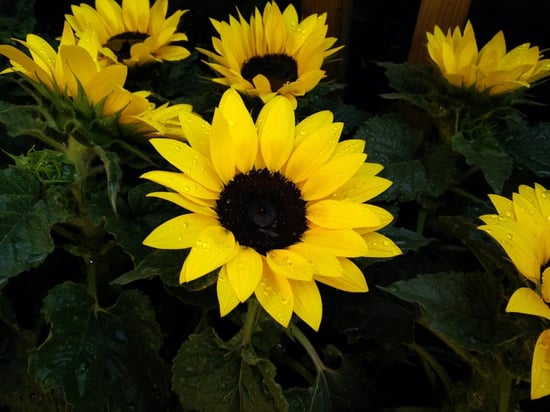
Urban gardens get a lot of press, and have for a few decades now. Don’t get us wrong, we’re all about urban gardens ... but we have to do them the right way.
Done the wrong way, these “green” spaces only add to many of the environmental problems we already face: they require massive nutrient inputs, they glug down water during dry times, they provide minimal to no habitat for native plants, they encourage fertilizer and pesticide use.
You won’t be surprised to hear us say ... um, no thanks. We need a better way.
Which is where native plants come in. We believe strongly in cultivating green spaces within urban boundaries that use the same species that would live there if the city had never been built. In Chicago, that means plants that evolved over millions of years to inhabit Illinois and the Midwest. In New York and Los Angeles, those plants will be different, of course. The bottom line is it’s all about providing local benefits by using the local plants already adapted to live in your neighborhood.
Among these benefits:
- Habitats for native animals and pollinators: Local animals evolved to live with and feed on local plants. Without those plants, their numbers decline and they inch (or rocket) closer to the brink of extinction. Habitat destruction due to urbanization is a serious problem, but urban gardens help to give a little of that habitat back – and in some cases, a lot.
- Stormwater management: Urban gardens provide natural spaces covered by permeable surfaces through which runoff can soak, filtering into aquifers to replenish them rather than sheeting over concrete and asphalt and washing toxins into our waterways.
- Air and water purification: Plants do a lot to suck up toxins, both from the air and out of the water. It keeps our local atmosphere cleaner, reducing asthma and lowering carcinogen levels, while ensuring the runoff that does eventually make it to streams and rivers contains fewer contaminants.
- Increased genetic diversity: One of the biggest dangers of using a few heavily marketed species in your garden (think European roses or other highly bred exotics) is the decrease in genetic diversity. That means a species is more susceptible to the dangers of plague or weather. With fewer genetic variables, plant species are likelier to get felled by hardship ... and we might not be able to get them back. Native gardens, however, increase genetic diversity and promote a wide variety of climate-adapted species, reducing this danger.
Oh, and did we mention urban gardens are a great way to unwind and enjoy a mocktail at the end of the day? I mean, we’re not telling you what to do but ... just saying.
It’s important to note, though, that we have to do native gardens right. Despite what your local garden center might tell you, nativars are not an appropriate replacement for true native plants. That means understanding the difference between a native and a nativar and a cultivar, and paying attention to these distinctions when selecting plants for your site.
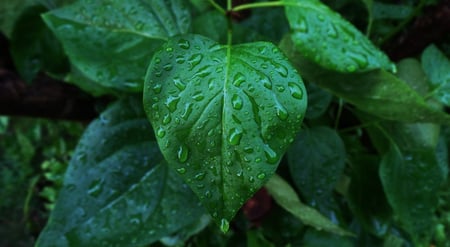 Rain Gardens
Rain Gardens
Rain gardens are an excellent green infrastructure tool. Not only do they provide habitat for native plants and animals, they provide on-site management of rainwater and snowmelt.
Rain gardens are shallow depressions that soak up the water running off impermeable surfaces nearby, filtering it to remove pollutants and providing a sight for sore eyes at the same time. Instead of leaving the site, precipitation penetrates into the ground, becoming a clean addition to the water table.
Permeable Pavers
Traditional impermeable surfaces send stormwater flowing away from the site on which it falls. Permeable pavers seek to fix this, by providing a similarly robust surface on which to walk or park a car without the waterproof aspect. Instead of placing components tightly side by side, permeable pavers leave space between them to encourage water to percolate into the ground. These pavers may be engineered in a variety of ways, but overall are an amazing way to fight stormwater in situ.
Rainwater Harvesting Systems
Rainwater harvesting is the perfect solution to both stormwater and drought. Using rain barrels or cisterns – on rooftops, at ground level or buried – we can capture rain as it comes down, then hang onto it until needed during the dry season. This water is perfect for watering the garden, washing the car or making handcrafted artisan ales.
Kidding. DON’T DO THAT.
Bioswales
Stormwater carries high loads of pollutants, which plants and soils do a fantastic job filtering out. The goal, then, is to put that water in contact with plants who can take care of those pollutants … and that’s exactly what a bioswale accomplishes. These depressions in the ground form a circuitous route down which water is shunted, giving it maximum exposure to the ground and the greatest possible chance of soaking in.
 Wetland Restoration
Wetland Restoration
Wetlands are some of the absolute best tools for managing stormwater. These naturally occurring or constructed areas collect stormwater runoff during high output periods, such as during storms or when snowmelt is high. They detain (slow down) and retain (hang on to) stormwater, reduce peak loads on streams and waterways, filter chemicals and disease, and help control flooding.
Some of the most effective wetlands have been destroyed by urban and suburban development, or were built on decades ago and then, when the land was abandoned, never restored. Wetland restoration is defined by the EPA as “the manipulation of a former or degraded wetland's physical, chemical, or biological characteristics to return its natural functions.” That means either:
- Rehabilitation, in which low-functioning and damaged wetlands are returned to their former state, or
- Reestablishment, in which wetlands that have disappeared due to human activity are rebuilt entirely
Tree Planting
Our favorite stormwater management tools are the ones we don’t have to build ourselves. And when it comes to kicking runoff’s butt, few systems can outperform trees. Check it:
- Trees store liquid in their crowns and branches: Yep, trees start capturing precipitation before it even makes it to the ground. Their leaves, branches and limbs all capture water, hanging onto it in the cracks or bark and absorbing it through pores. Although not a ton of moisture penetrates into the tree this way, trees still retain a lot of liquid across their surfaces, which can then evaporate back into the atmosphere after the rain or snow event passes.
- Trees suck up stormwater through roots: Everyone knows that trees hydrate through their roots, and when the ground around them gets soaked, trees take a good long drink. They later release this water back into the atmosphere by exhaling it through the stomata on leaves. Evapotranspiration to the rescue once again!
- Tree litter helps with stormwater absorption: Leaf litter from trees, and the soil that surrounds them (even small spaces nestled within sidewalks) helps to promote the conditions needed for stormwater to filter into the ground and back into aquifers.
- Trees provide excellent filtration: Like many other plants, trees take up water containing pollutants, then break down those pollutants into more harmless substances before releasing them back out into the world. Filtration and peak runoff management, all in one!
So, yeah. Trees. They’re where it’s at.
We’ve covered a LOT of the benefits here in this section, but just in case you skipped those and want a more in-depth look, let’s take a gander at some of the main perks of properly designed and maintained green infrastructure, below.
What Are the Benefits of Green Infrastructure?

Green infrastructure offers innumerable benefits in the form of stormwater management, urban ecology and health perks for urban-dwelling humans and animals.
Systems designed to manage runoff – native and otherwise – have repercussive perks. For instance, green roofs soak up and treat rainwater, but they also give bees a place to rest on forage missions. This not only benefits our food systems, it promotes sound ecological systems. Birds have pit stops for migration; non-migratory species have nesting sites; critters have sources of shelter and – in the case of native gardens with larger species – food sources.
Green roofs also fight the urban heat island effect, boost property values and help buildings reduce their energy consumption. These make a huge difference in the health of cities and their inhabitants. Less fossil fuel use means fewer asthma cases, cooler buildings in summer (leading to less heat-related deaths) and lower carcinogen concentrations in our air and water.
Think that’s it? Oh, no.
Green infrastructure also helps precipitation soak into the ground more frequently right there in cities. That helps replenish aquifers, which are being mined at far faster rates than they can refill. It also keeps waterways cleaner, reducing toxins and diseases that impact plants and animals in our wild areas – as well as within urban borders.
Green roofs, gardens and trees are also noise dampening and pretty, and they increase the desirability of buildings and neighborhoods.
Lastly, stormwater management systems can help conserve water for drought-prone areas. Instead of letting water wash down streets during rain events, we can trap it in stormwater harvesting systems and rain barrels. Underground, above-ground or rooftop containers collect water and save it, ready for use on gardens and (if you really feel you have to) lawns during droughts.
Believe it or not, GI also saves municipalities, companies and private individuals good money.
How Does Green Infrastructure Save Money?
Green infrastructure has somehow acquired a reputation as the more expensive option for treating wet weather and resulting runoff. Yet that’s not true; in fact, many sources indicate that green infrastructure may be the less expensive option by a considerable amount.
Part of the problem is that critics tend to view green infrastructure in a vacuum. “Look at that price tag!” they gasp, as if there’s not also a price tag associated with building grey infrastructure. Then they fail to take into account how much more it costs to maintain non-living grey systems over the years, whereas GI’s living paradigms actually help us maintain those systems with relative ease.
Yeah. They’re that cool. (Stop gasping, grey infrastructure peeps. It’s true.)
Green Versus Grey Infrastructure: How Do They Compare?
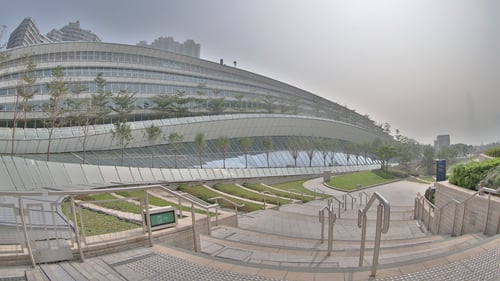
While both green and grey infrastructure can help channel stormwater away from cities and reduce overwhelm from rainfall, floods and snowmelt, the latter is a shortsighted option.
But we’re getting ahead of ourselves. Let’s start with a definition of grey infrastructure.
In a nutshell, the term “grey infrastructure” encompasses any system designed by humans to manage stormwater. That includes pipes, pumps, drains, ditches, ponds, culverts, dikes, and so forth. These systems are not drawn from nature, but rather rely on constant maintenance and updates to continue providing benefits – such as they are. And they are limited for many reasons. For instance, they:
- Rust, corrode and break down in ways that a bioswale or rain garden simply won’t
- Don’t benefit from a covering of healthy green plants to help manage the vicissitudes of wet and dry, hot and cold weather
- Are often outdated, especially in big cities, where they are holdovers from earlier times and different approaches to engineering
- Have a hard time keeping up with population expansion, which means they quickly get overloaded
- Combine greywater (non-sewage water from homes and commercial buildings) with sewage with wastewater from factories and industrial operations
- Do not at any point soak up or cleanse stormwater
Instead, water either moves to treatment plants, which themselves create a number of environmental harms, or it overflows without treatment right into streams and rivers – carrying toxins, pollutants and often raw sewage right along with it.
For obvious reasons, we’re not in favor of that.
It’s also important to note that grey infrastructure, even that which is effective at rerouting stormwater in healthy ways that respect the watershed (which it most often is not), does little to benefit urban ecology. Few animals want to set up shop on a cement slab, especially when it’s overrun with toxic sludge.
Green infrastructure, on the other hand, provides all the benefits we talked about above, is easier to maintain over time, requires replacement less frequently, and makes plans and animals really happy. Worth it? We think so.
Oh, and NBD, but it’s cheaper too.
The Relative Costs of Grey and Green Infrastructure
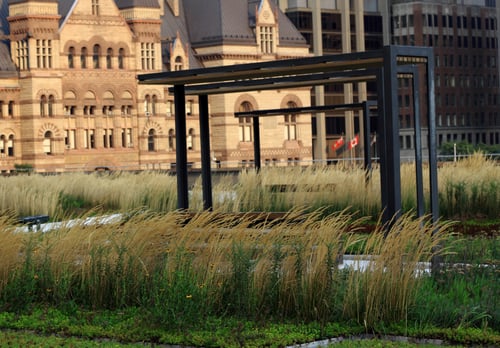 According to a new study cited by CityLab, when you measure the costs of green and grey infrastructure against one another, the result is startling: “About a quarter of projects raised costs, 31 percent, kept costs the same and more than 44 percent actually brought costs down.” (7)
According to a new study cited by CityLab, when you measure the costs of green and grey infrastructure against one another, the result is startling: “About a quarter of projects raised costs, 31 percent, kept costs the same and more than 44 percent actually brought costs down.” (7)
“New York City’s plan to reduce combined sewage overflows will save an estimated $1.5 billion over 20 years by incorporating green infrastructure rather than relying solely on traditional gray infrastructure like massive pipes,” reports the study. “In Louisiana, a high school in Baton Rouge spent $110,000 on bioswales and a rain garden to reduce flooding rather than the $500,000 it would have cost to re-pipe the site.” (8)
This story is playing out all over the nation: “In a planned Hartford, Connecticut shopping mall expansion, for example, by specifying pervious grass paving in an overflow parking area at a cost of $500,000, the developer will completely avoid having to build a detention pond that was projected to cost more than $1,000,000,” Building Green reports. “Because conventional asphalt paving would cost almost as much as the grass paving, the total savings are nearly a million dollars—plus, there were savings in the permitting process because the grass paving was more acceptable to neighbors and environmental officials.” (9)
Moving beyond direct comparisons, green infrastructure impacts the surrounding areas in very positive ways. For instance, while a rooftop garden makes a sweet setting for a barbecue, it also creates a major hike in property value, says a study by the University of Wisconsin-Milwaukee Center for Economic Development.
“Using a hedonic pricing model, their results indicated that a recreational rooftop garden increased property values by about 11 percent,” the study says, while rooftop veggie gardens may increase it by 7 percent.
Those benefits even confer on surrounding properties, potentially raising property values of those within 500 feet of the garden by 5 percent, and by 2 percent up to 1,000 feet. The result? Better home prices and better neighborhoods.
Mmmmmyes, please.
Trees also add substantial value to properties. You can even calculate exactly how much your trees add to your property by checking out the nifty tool listed in the sources below (10). Additionally, landscaping adds as much as 7 percent to office building rental rates, which is a pretty incredible jump when you consider how many other benefits GI brings to the table. (11) Truly, if you’re looking to improve your property values green infrastructure may just be the best way to go.
Neighborhood Benefits of Green Infrastructure
 Green infrastructure does much out in the wider world as well, says the EPA. (12) It impacts employment, retail sales and rents in very positive and measurable ways. According to their estimates:
Green infrastructure does much out in the wider world as well, says the EPA. (12) It impacts employment, retail sales and rents in very positive and measurable ways. According to their estimates:
- Landscaping adds 7 percent to average rental rates
- Mature tree canopies result in retail sales 8 to 12 percent higher
- Permeable pavers save an average $2.5 million by year 57
- Green roofs add 16 percent to average residential rental rates
Not so bad, right? Plus, crime goes down (lowering bills associated with law enforcement and property damage) and employee satisfaction goes up (reducing lost work time and health insurance claims).
Now let’s take a closer look at what “green” really means and how we should change our mindset.
How Do We Misunderstand What “Green” Is?
Unfortunately, we only accrue all of the above benefits if we possess a clear understanding of what “green” is – and too often, we do not. We assume that just because something looks green, it automatically checks all those environmental boxes. Nope.
For example, let’s consider green roofs, one of our staple stormwater management techniques. A green roof composed of fertilizer-soaked sedum that quickly dies when exposed to the elements is not, in the end, green at all. It’s just one more expensive, and now dead, landscaping project – that moreover used lots of chemical inputs and other resources to get there. It might look green, but for how long? And how good is it for the environment while it’s being grown in a cozy greenhouse with all its needs met – only to suffer shock and death when it moves into its new home? Not only do we use all those inputs growing it, but they’re all for naught a few short months later!
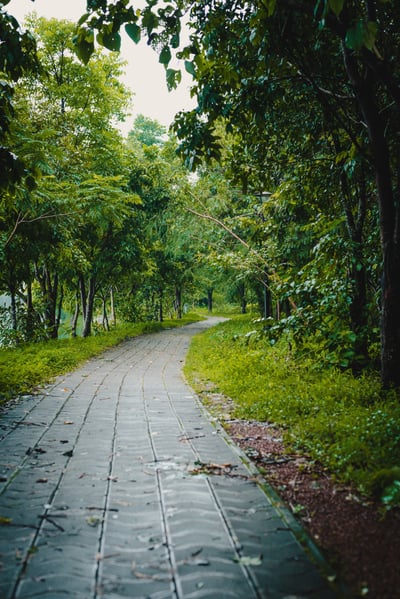 That’s why we ask tough questions, like how green the green building industry actually is, and how we can bridge the gap between sustainability and resilience, which are not actually the same thing. Considering these issues – along with the difference between looking and being green – is a crucial step for any environmentally minded soul.
That’s why we ask tough questions, like how green the green building industry actually is, and how we can bridge the gap between sustainability and resilience, which are not actually the same thing. Considering these issues – along with the difference between looking and being green – is a crucial step for any environmentally minded soul.
* climbs down from soapbox *
The point is, even the best-intentioned green infrastructure only benefits the world if it’s done right, meaning it must blend seamlessly with nature. Anything that works against nature or can’t integrate with her – or that requires damaging inputs in order to be realized in the first place – doesn’t make the cut, no matter how green it looks on the surface.
Here’s the best way to think about it:
“Green infrastructure is an approach to water management that protects, restores, or mimics the natural water cycle,” says American Rivers, adding that for almost every grey infrastructure system there exists a green analogue. (13) It advocates:
- Replacing water treatment plants with trees and restored wetlands
- Prioritizing water efficiency over building dams
- Restoring floodplains rather than constructing levees
At the end of the day, if nature can’t embrace it and it doesn’t add to the health of the wider ecology, it’s not actually green. That’s a truth more people need to absorb if we’re going to make the global impact we seek – one that finally benefits rather than endangers our natural world.
Green Infrastructure and Stormwater Best Management Practices
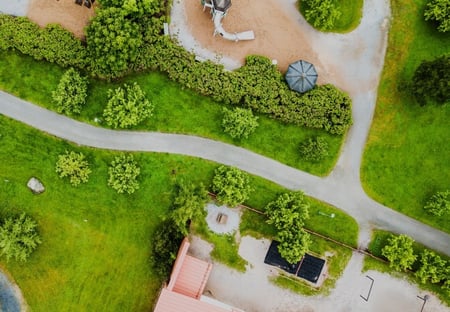 We city-dwellers are so used to the sight of impermeable surfaces that we don’t think about them all that much. Even people who work in the environmental industry rarely spare a thought for the roads they drive on, the bricks and cement that coat the outsides of buildings, and the asphalt on which they park to go to the mall or attend a Bears game. (Hey, some people spend a lot of time at Soldier Field, okay??)
We city-dwellers are so used to the sight of impermeable surfaces that we don’t think about them all that much. Even people who work in the environmental industry rarely spare a thought for the roads they drive on, the bricks and cement that coat the outsides of buildings, and the asphalt on which they park to go to the mall or attend a Bears game. (Hey, some people spend a lot of time at Soldier Field, okay??)
But we should spare such surfaces a thought. Many thoughts, when you consider the undeniable correlation between impervious surfaces and runoff. As GreenBuilding illustrates well in its article on environmentally sound stormwater approaches (14):
- Natural ground cover equates with 10 percent runoff
- 10-20 percent impervious surface results in 20 percent runoff
- Increases to 35-50 percent impervious means 30 percent runoff
- 75-100 percent impervious means 55 percent runoff
Honestly, in many cases, these numbers are even more alarming. Adding to the problem is that we instinctively build in ways that add to stormwater runoff when we don’t even have to.
Take curbs, for instance. Our streets are almost invariably lined with them, which prevents stormwater that floods through streets from flowing toward a permeable surface (such as a lawn or garden) that could absorb and filter it, adding to aquifer recharging and subtracting from the runoff equation. Instead, we have 6-inch cement curbs that essentially ensure that runoff will continue on its merry way, the better to carry exhaust, pesticides and dog waste to streams and waterways. Yum.
Oh, wait. NOT yum.
The more we can adjust our GI approaches to avoid runoff, the better our cities will become. More specifically, the goal of green stormwater management infrastructure is to:
- Minimize the degradation of water quality
- Reduce erosion and habitat loss therefrom
- Minimize flooding in urban environments and downstream as a result of peak stormwater runoff
- Steward natural waterways and help them maintain their current forms
- Recharge or at least maintain aquifers by maximizing infiltration
- Increase the chances of natural infiltration in situ
- Keep urban sites clean, safe and pretty
- Maximize the cost-effectiveness of stormwater management systems
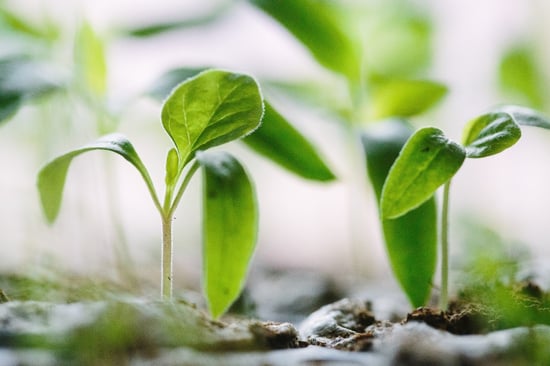 Luckily, not every green infrastructure move has to involve massive cost outlays or years of planning. Instead, we can make small adjustments to city planning and development, and reap huge stormwater benefits as a reward. Consider such strategies as:
Luckily, not every green infrastructure move has to involve massive cost outlays or years of planning. Instead, we can make small adjustments to city planning and development, and reap huge stormwater benefits as a reward. Consider such strategies as:
Leave as Much Land Undisturbed as Possible When Building
Even when construction teams aren’t planning on doing anything with a particular chunk of land, they will often use it for accessing the construction site, storing materials, and so forth. The trouble is, this is still destruction of habitat. Plus, it compacts soils, turning them into impermeable surfaces. Carefully conserving land that’s not being developed on is just as important as developing responsibly.
Drain Rooftops Into Vegetation
Ideally, all rainwater or precipitation that first lands on a roof will drain right into a vegetated surface. The most immediate solution to this is green roofing, which traps water right at the source. A close second is to funnel water toward vegetated surfaces at the bottom of buildings, such as rain gardens or infiltration trenches.
Minimize Impervious Surfaces
It’s not as difficult as one might assume to make formerly impervious surfaces absorbent. For instance, we don’t need to pave driveways and parking lots over with asphalt or cement. Instead, we can use permeable pavers, which come in a huge variety of forms, look aesthetically appealing, last a long time and generally provide great bang for their buck. Plus, they mega-minimize the amount of stormwater sheeting off surfaces into streets and waterways.
Minimize Connected Impervious Surfaces
Closely related to the above, we need to minimize not only the surfaces themselves but also their proximity to one another. Sometimes you can’t avoid an impervious surface. But if you can site it such that there exists permeable ground between two impervious patches, this will minimize the collective runoff effect. The result is more stormwater will penetrate into the ground sooner, keeping rushing flows out of streets, minimizing CSOs and preventing erosion.
Avoid Gutters
Gutters, long an architectural standard, are a far cry from elegant when it comes to stormwater management. They collect water and create a stronger, more concentrated flow, which contributes mightily to peak runoff problems. If possible, avoid gutters altogether, opting for a gutterless runoff solution. The exception is when you’re using rainwater harvesting devices, like barrels or cisterns, in which case it is obviously helpful to funnel water to one area.
Larger-Scale Stormwater Management Measures to Take
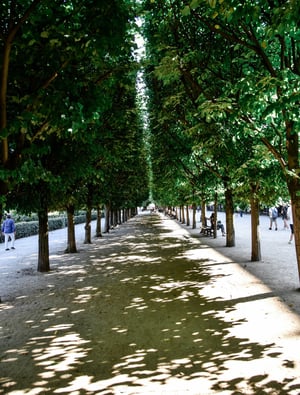 The suggestions don’t stop here, says BuildingGreen. On a larger scale, we need to keep stormwater in mind when we are planning and building communities at the street and neighborhood level – and eventually on a citywide scale. Suggestions include:
The suggestions don’t stop here, says BuildingGreen. On a larger scale, we need to keep stormwater in mind when we are planning and building communities at the street and neighborhood level – and eventually on a citywide scale. Suggestions include:
- Clustering buildings to reduce the number and width of streets, opening up green spaces, which are more permeable
- Reducing reliance on cars by making neighborhoods more accessible, which will in turn reduce our reliance on fossil fuels – important as the byproducts of combustion are one of the biggest problems when it comes to urban (and global) pollution
- Provide green spaces for pet exercise, which will minimize the amount of excrement that ends of up in the streets, carrying disease and nutrients to waterways
- Lay out streets for simplified cleaning processes
- Incorporate on-site or nearby pollutant-fighting systems and biofilters, such as wetlands and floating wetlands
Also, did you know that it’s not uncommon to dump toxic waste into storm drains? Homeowners, businesses and construction companies open up drains that lead right into the sewer and dispose of paint, pesticides, auto fluids, oils and other waste. The problem is – other than the fact that this is illegal – storm drains do not head to wastewater treatment plants the way household greywater and sewage does. Instead, all these liquids (and even litter) go straight into waterways.
One of the best practices for managing stormwater is to make it VERY, VERY CLEAR that storm drains go right into waterways. We can do this with spray painted signs on the ground, which are highly visible and resist wearing away. By making it obvious that this activity is illegal and dangerous, we can help fight the trend. This is a relatively simple and important step for every municipality to implement right away.
Speaking of hazardous and toxic materials, let’s take a look beyond disposal and turn our attention to new building projects.
What Are the Best Materials to Use in Green Infrastructure Projects?
Building isn’t going anywhere soon. With the exploding human population and ongoing urbanization of large cities, construction firms are busier than ever. While that’s good news for the economy and labor force, it’s not nearly as positive a reality for the Earth and its resources. Unfortunately, far too many of the materials required for construction are either a) raw or b) toxic – or c) both.
It’s nonsensical to say we should simply stop building. While it would be nice if our population could stabilize, no single individual or firm has much control over that. Instead, what we can control is what we put into the new structures popping up left, right and center. That means choosing building supplies that are, wherever possible, nontoxic, nonpolluting, nondamaging to the health of factory and construction workers, and ideally recycled.
One of the best ways to go about finding such materials is to check the Living Building Challenge Red List. (15) This succinct and well-organized resource aggregates the worst in class building materials, such as antimicrobials, asbestos, CFCs, formaldehyde, PFCs, toxic heavy metals, and more. Simply by cross-referencing these compounds against the ingredients used in your building materials will result in much safer buildings for people and the environment.
Of course, it’s not always easy to tell what exactly is in a specific building product, which is where further transparency is needed. In response to this obligation, the International Living Future Institute (which also runs the Red List) has implemented the Declare program. Its goal is to “facilitate the exchange of information and enable a future of healthier buildings” by providing a labeling option for environmentally conscious manufacturers that will help them share what’s in their materials. (16) In turn, their buyers can check those labels to reduce or eliminate their use of deleterious products in their projects. This is a great place to start if you’re wondering what’s in your products.
It’s also a good idea to speak to the manufacturers of your products directly, either to determine what’s in them or what’s not (again, by comparing to the Red List). This goes for any and all materials you might wish to use in green infrastructure projects, including:
- Geotextiles
- Recycled plastics
- Growing media (think expanded shale, expanded clay, pumice or other lightweight aggregates, as well as soil mixes)
- Permeable pavers
The bottom line is that communication is key. If you don’t ask what’s in something, you can’t know. Don’t assume your regular supplier will object, either. They may already be making changes in favor of green infrastructure principles, and if they’re not, your interest might spur them in that direction. If you care about the environment, it’s always worth starting that conversation.
What Steps Can You Take Toward Implementing Green Infrastructure?
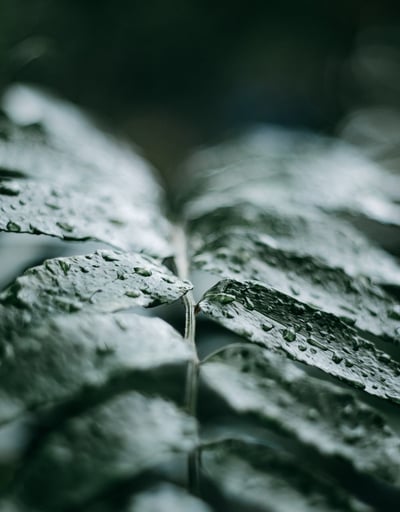 Sometimes, as much as you want to help, you just don’t know how. Luckily, this isn’t like that knock-down-drag-out your parents had last Christmas over who forgot to defrost the turkey while you stood by helplessly. This time there is something you can do: You can take small strides immediately. In your garden. On the rooftops of buildings in your office park. In tucked-away corner of your school or campus – or a highly visible one.
Sometimes, as much as you want to help, you just don’t know how. Luckily, this isn’t like that knock-down-drag-out your parents had last Christmas over who forgot to defrost the turkey while you stood by helplessly. This time there is something you can do: You can take small strides immediately. In your garden. On the rooftops of buildings in your office park. In tucked-away corner of your school or campus – or a highly visible one.
Many cities are already rising to the occasion to demonstrate what’s possible. For instance, London has undertaken the historic decision to become the world’s first “National Park City,” a groundbreaking idea meant to meld city and nature in a seamless patchwork of environmental bliss. (Okay, maybe we got a little too poetic there. But we really like the idea.)
Here in Chicago, we’re working hard to do our part as well. Chicago’s unique site along the lakefront puts it in a position of responsibility when it comes to water conservation. The city’s goals include reducing damaging flooding to citizens, minimizing water pollution, enhancing environmental quality through water infrastructure investments, and increasing the city’s resilience to extreme rain events and climate change.
The methods for doing this are manifold, including many that we’ve mentioned above:
- Extensive green roofs
- Intensive green roofs
- Roof gardens
- Floating wetlands
- Native gardens
- Rain gardens
- Rainwater harvesting systems
- Permeable pavers
- Bioswales
- Wetland restoration
- Tree planting
As you can see, we’re definitely in favor of creating new green systems to help manage stormwater, keep waterways healthy and improve the efficiency of our cities. One of the most overlooked steps, however, is simply to maintain green infrastructure. By keeping preexisting systems such as green roofs or bioswales in good shape, we not only make the best use of the dollars that went into those systems, but we make a huge impact on stormwater as well.
Not sure where to start?
That’s cool, because we’re here to help. Whether you want to install a new system, have a green roof that needs a little TLC, or simply want to ask some questions, we invite you to get in touch with Ecogardens today.
And remember, you can feel free to download that report at any time to take with you, read on the airplane, show your family and friends, or print out and cover your office wall à la A Beautiful Mind. I mean, it’s an option. Just putting it out there.
That said, thanks for reading, and good luck fighting the good fight!
--
SOURCES
(1) https://www.epa.gov/green-infrastructure/what-green-infrastructure
(2) https://foodrevolution.org/blog/almonds-sustainability/
(3) https://www.eecenvironmental.com/what-is-stormwater-management/
(4) https://www.theatlantic.com/technology/archive/2017/08/why-cities-flood/538251/
(5) https://www.greenroofplan.com/intensive-vs-extensive-green-roofs/
(6) https://www.epa.gov/wetlands/basic-information-about-wetland-restoration-and-protection
(7) https://www.citylab.com/life/2012/04/green-infrastructure-could-cities-save-billions/1832/
(8) https://www.asla.org/ContentDetail.aspx?id=31301
(9) https://www.buildinggreen.com/feature/stormwater-management-environmentally-sound-approaches
(10) http://www.treebenefits.com/calculator/
(11) https://www.epa.gov/G3/green-jobs-your-community
(12) https://www.epa.gov/G3/green-jobs-your-community
(14) https://www.buildinggreen.com/feature/stormwater-management-environmentally-sound-approaches
(15) https://info.ecogardens.com/blog/what-is-the-living-building-challenge-red-list
(16) https://living-future.org/declare/
--

